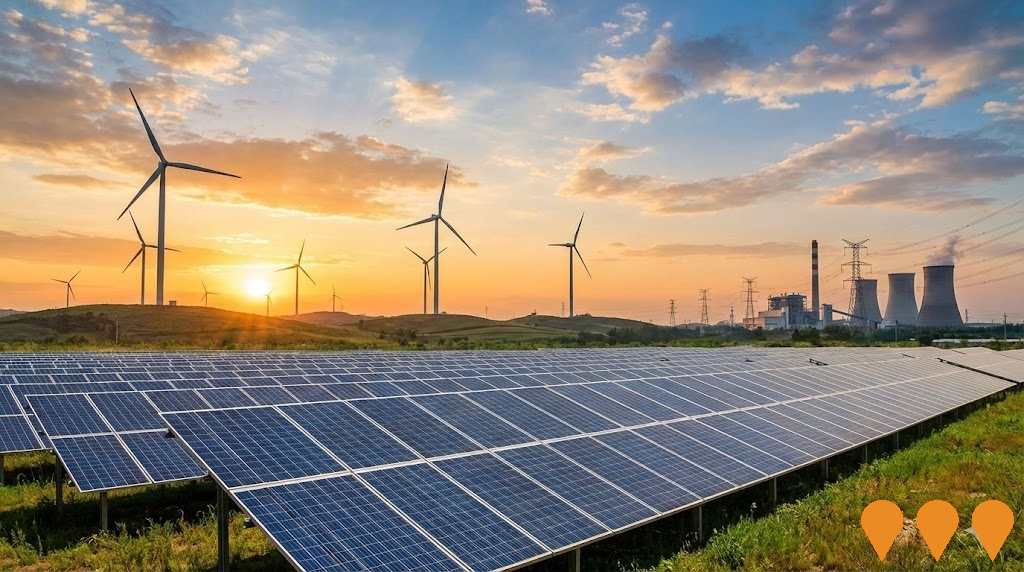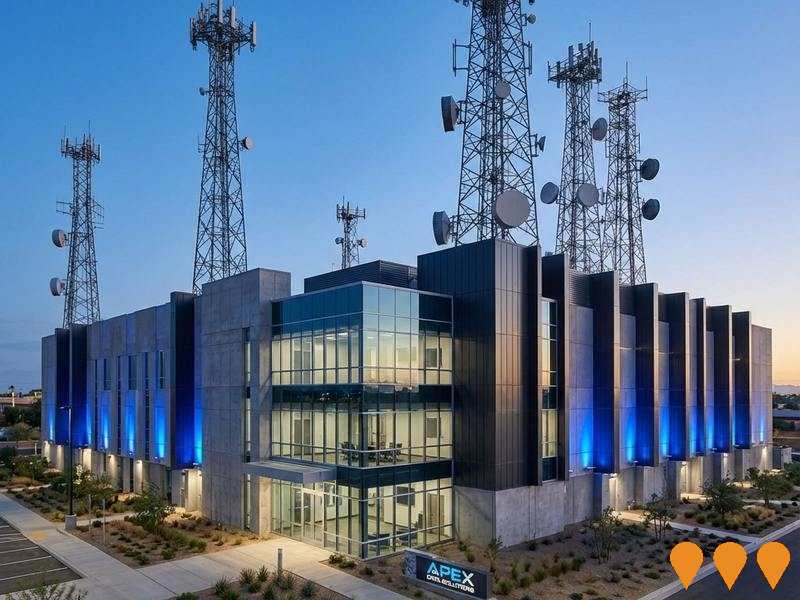Chart Color Schemes
est. as @ -- *
ABS ERP | -- people | --
2021 Census | -- people
Sales Activity
Curious about local property values? Filter the chart to assess the volume and appreciation (including resales) trends and regional comparisons, or scroll to the map below view this information at an individual property level.
Find a Recent Sale
Sales Detail
Population
Population growth drivers in Daylesford are strong compared to national averages based on AreaSearch's ranking of recent, and medium to long-term trends
Daylesford's population is around 10,814 as of Aug 2025. This reflects an increase of 859 people since the 2021 Census, which reported a population of 9,955. The change was inferred from ABS estimated resident population of 10,294 in June 2024 and additional 194 validated new addresses since the Census date. This results in a density ratio of 11.7 persons per square kilometer. Daylesford's growth rate of 8.6% since the 2021 census exceeded the SA3 area's 4.6%, making it a growth leader in the region. Interstate migration contributed approximately 58.6% of overall population gains recently.
AreaSearch is using ABS/Geoscience Australia projections for each SA2 area, released in 2024 with 2022 as the base year. For areas not covered by this data, AreaSearch uses VIC State Government's Regional/LGA projections from 2023, adjusted employing a method of weighted aggregation of population growth from LGA to SA2 levels. Growth rates by age group are applied across all areas for years 2032 to 2041. Future population dynamics anticipate an increase just below the median for locations outside capital cities, with Daylesford expected to increase by 967 persons to 2041 based on latest numbers, a total increase of 3.7% over 17 years.
Frequently Asked Questions - Population
Development
AreaSearch assessment of residential development activity positions Daylesford among the top 25% of areas assessed nationwide
Daylesford recorded approximately 101 residential properties approved annually. Between FY21 and FY25508 homes were approved, with a further 9 approved in FY26 to date. Over these five years, an average of 1.4 new residents arrived per new home.
This balance suggests stable market conditions, while the average dwelling value of $734,000 indicates targeting of the premium market segment. In FY26, $27.4 million in commercial approvals have been registered, indicating balanced commercial development activity. Compared to the rest of Victoria, Daylesford has seen 43.0% more development per person over the past five years, offering reasonable buyer options while sustaining property demand.
Recent construction comprises 88.0% standalone homes and 12.0% medium and high-density housing, maintaining the area's traditional low density character. With around 111 people per approval, Daylesford reflects a developing area. By 2041, Daylesford is expected to grow by approximately 400 residents. Current construction levels should adequately meet demand, creating favourable conditions for buyers and potentially enabling growth exceeding current forecasts.
Frequently Asked Questions - Development
Infrastructure
Daylesford has emerging levels of nearby infrastructure activity, ranking in the 26thth percentile nationally
No changes can significantly affect a region's performance like modifications to local infrastructure, major projects, and planning initiatives. AreaSearch has identified zero projects expected to impact this area. Notable projects comprise Western Renewables Link, Victorian Renewable Energy Zones, X'Trapolis 2.0 Trains, and Melbourne Metro Tunnel - Rail Systems Alliance, with the following list highlighting those likely most pertinent.
Professional plan users can use the search below to filter and access additional projects.
INFRASTRUCTURE SEARCH
 Denotes AI-based impression for illustrative purposes only, not to be taken as definitive under any circumstances. Please follow links and conduct other investigations from the project's source for actual imagery. Developers and project owners wishing us to use original imagery please Contact Us and we will do so.
Denotes AI-based impression for illustrative purposes only, not to be taken as definitive under any circumstances. Please follow links and conduct other investigations from the project's source for actual imagery. Developers and project owners wishing us to use original imagery please Contact Us and we will do so.
Frequently Asked Questions - Infrastructure
Outer Metropolitan Ring / E6 Transport Corridor
The Outer Metropolitan Ring / E6 Transport Corridor is a long-term planning project to reserve a 100km corridor for a future high-speed freeway and rail link in Melbourne's north and west. It will connect key growth areas from Werribee to Beveridge, linking major freeways and providing capacity for both road and up to four rail tracks for passenger and freight services.
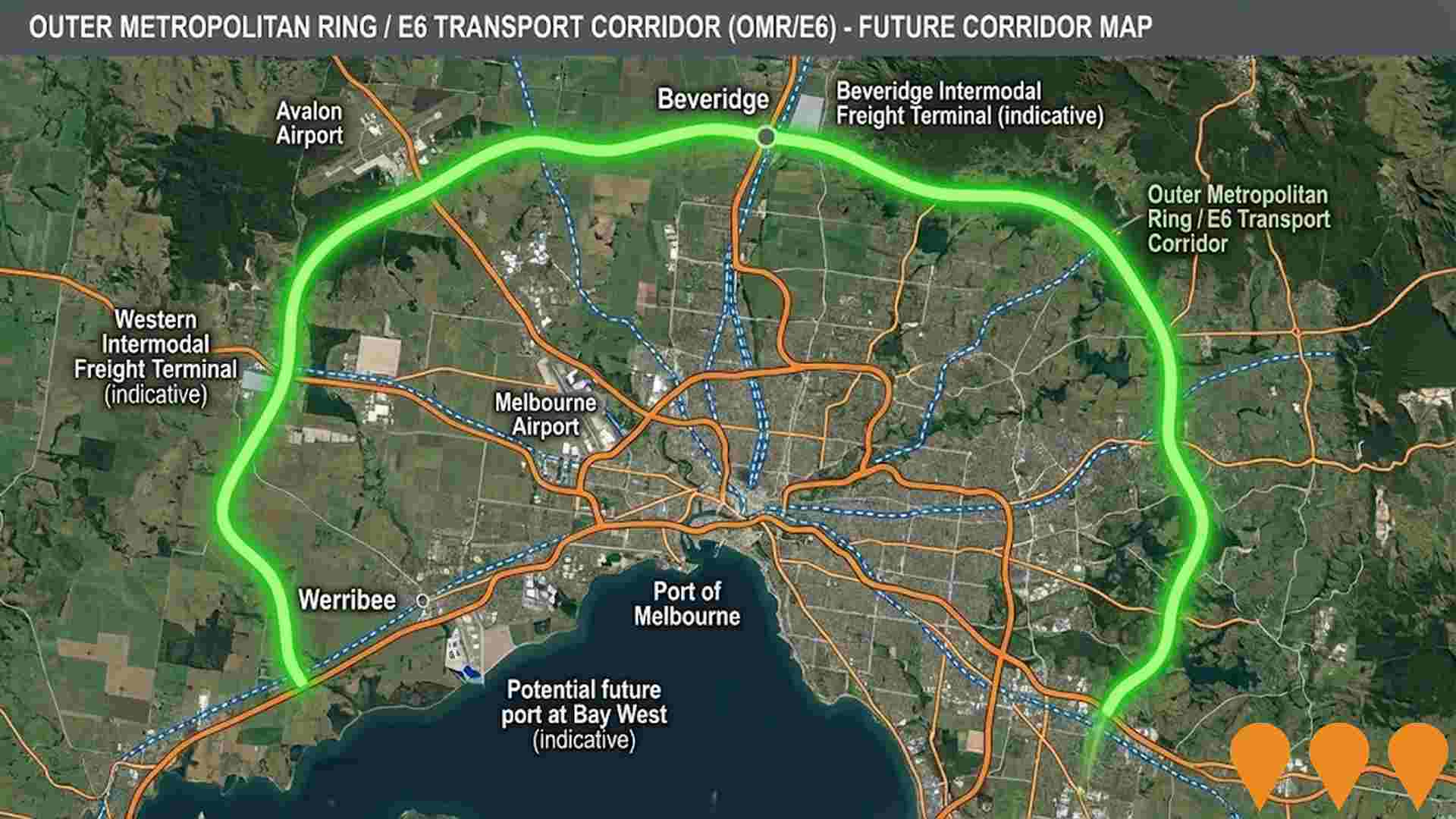
Victorian Renewable Energy Zones
VicGrid, a Victorian Government agency, is coordinating the planning and staged declaration of six proposed onshore Renewable Energy Zones (plus a Gippsland shoreline zone to support offshore wind). The 2025 Victorian Transmission Plan identifies the indicative REZ locations, access limits and the transmission works needed to connect new wind, solar and storage while minimising impacts on communities, Traditional Owners, agriculture and the environment. Each REZ will proceed through a statutory declaration and consultation process before competitive allocation of grid access to projects.
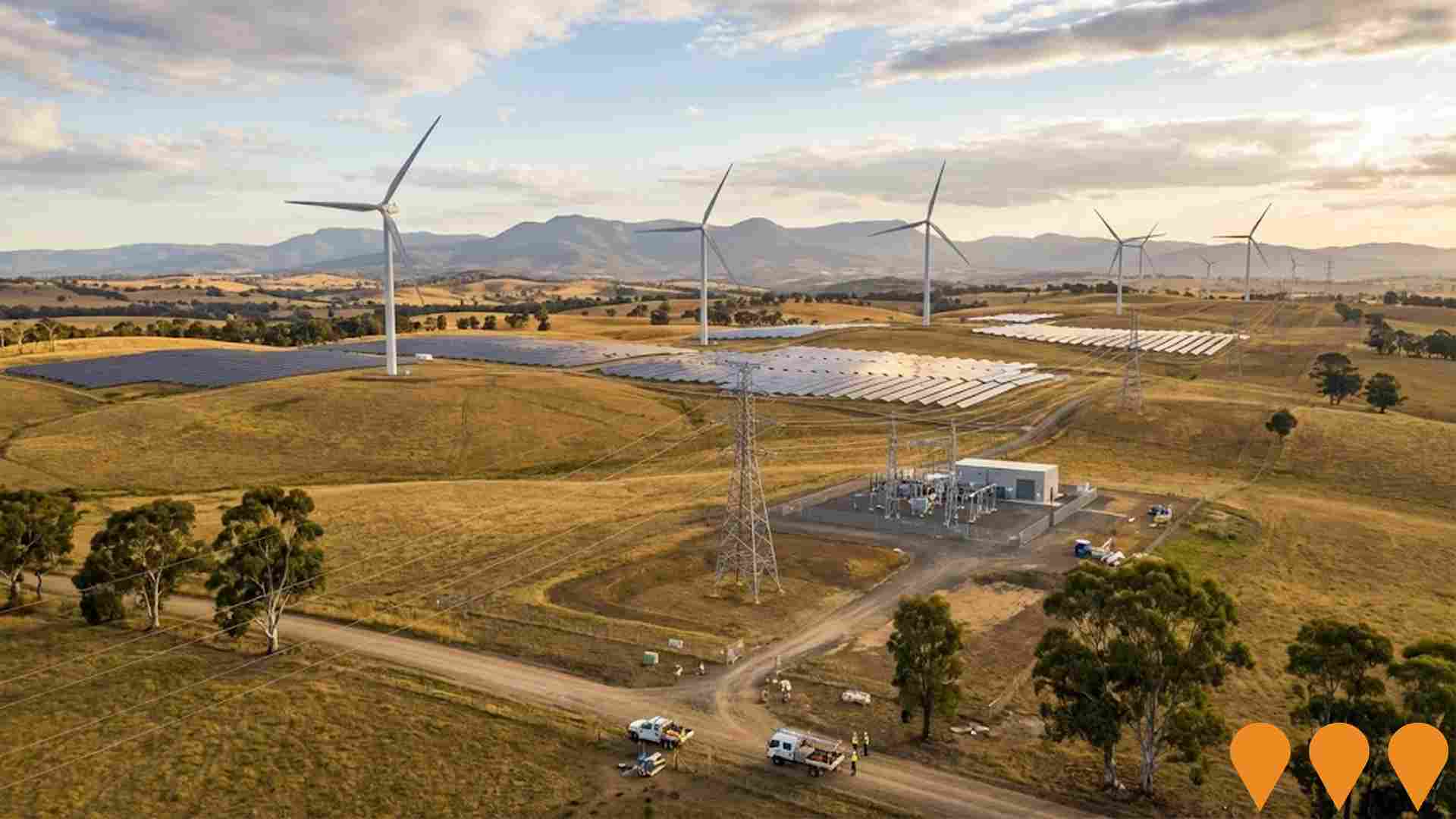
Water and Sewer Network Program
A major 10-year plus program valued at $100 million in its first phase to renew and upgrade critical water and sewer pipes and pumps across the Coliban Water region. The program aims to protect community health, support economic development, and address changing climate needs. Key features include pipeline construction, sewer main upgrades, and pump station improvements across multiple townships. The first phase covers 2023-2028 and is delivered in partnership with Jaydo Construction and Leed Engineering, who are committed to using local resources and materials to maximize social and economic benefits for the region.
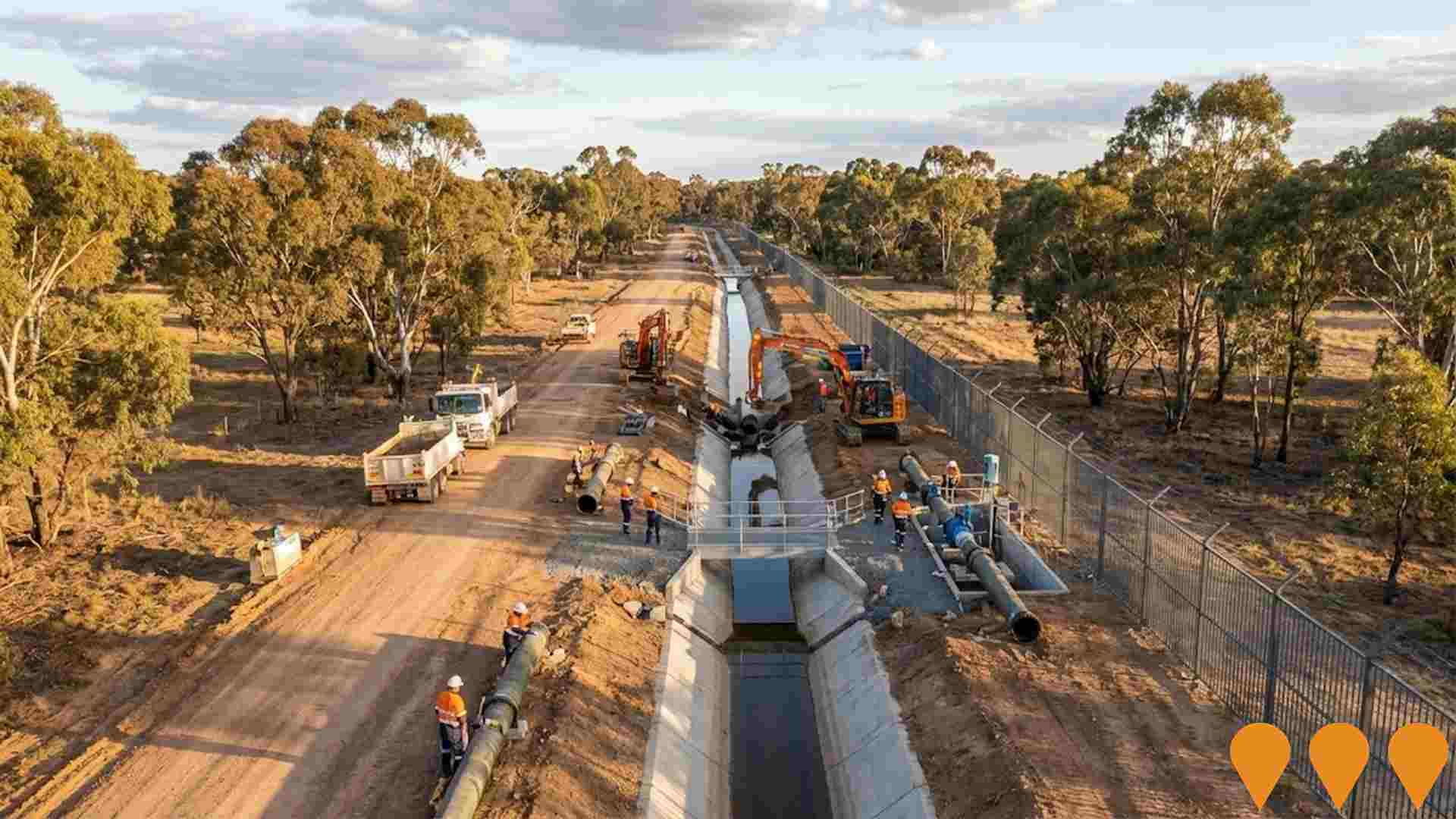
Ballarat Line Upgrade
Upgrade of the Ballarat regional rail line between Deer Park West/Melton and Ballarat completed in early 2021. Works delivered 18 km of duplicated track between Deer Park West and Melton, new Cobblebank Station, upgrades at Bacchus Marsh, Ballan, Rockbank and Wendouree, passing loops at Ballan and Millbrook, new stabling at Maddingley, and signalling and track improvements. The upgrade enabled around 135 extra weekly services across the line with peak services about every 20 minutes and off-peak about every 40 minutes.
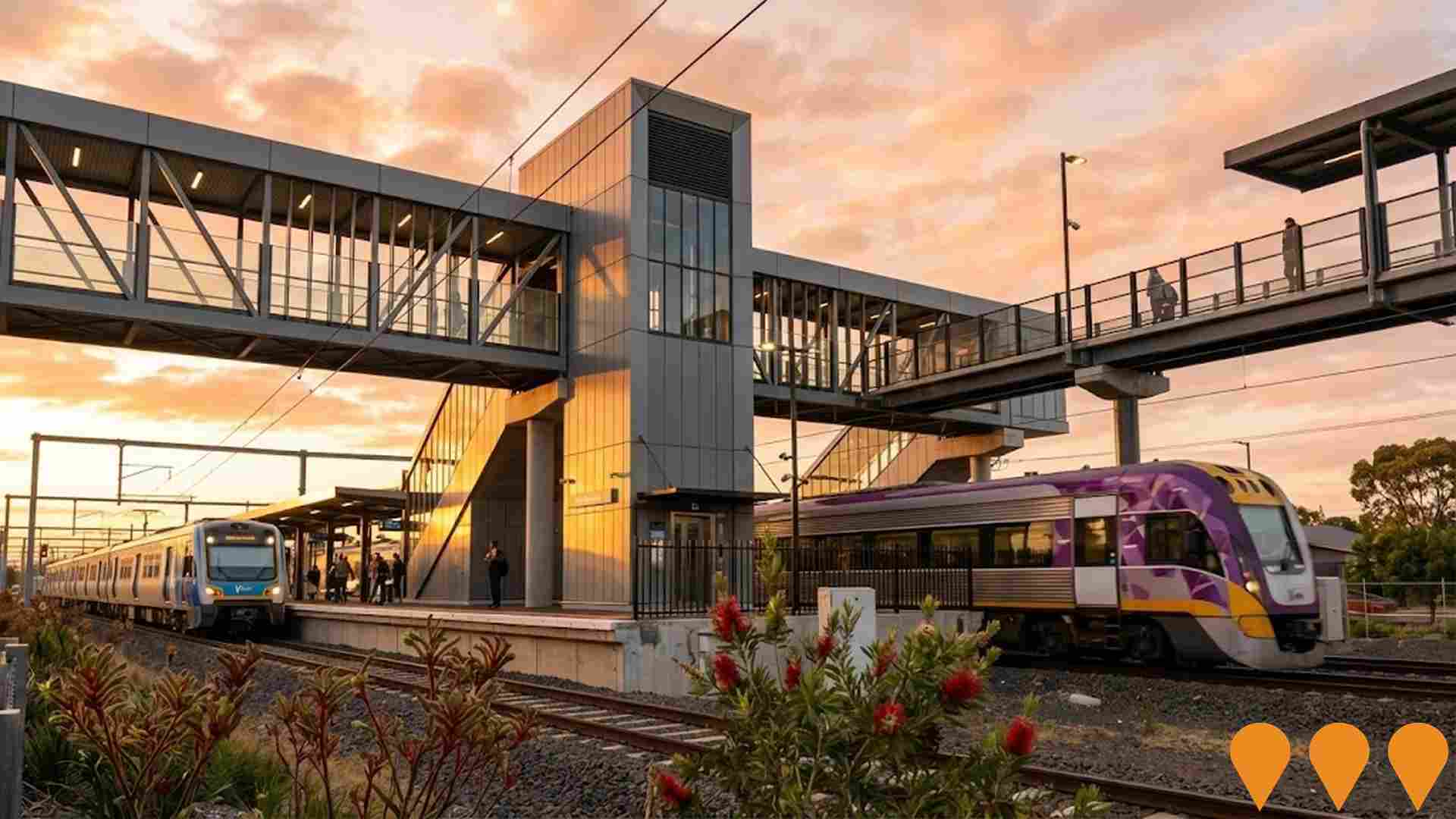
Western Renewables Link
Proposed 190km overhead 500kV double circuit high-voltage electricity transmission line from Bulgana in western Victoria to Sydenham in Melbourne's north-west. The project is currently in the EES public exhibition process (30 June to 25 August 2025).
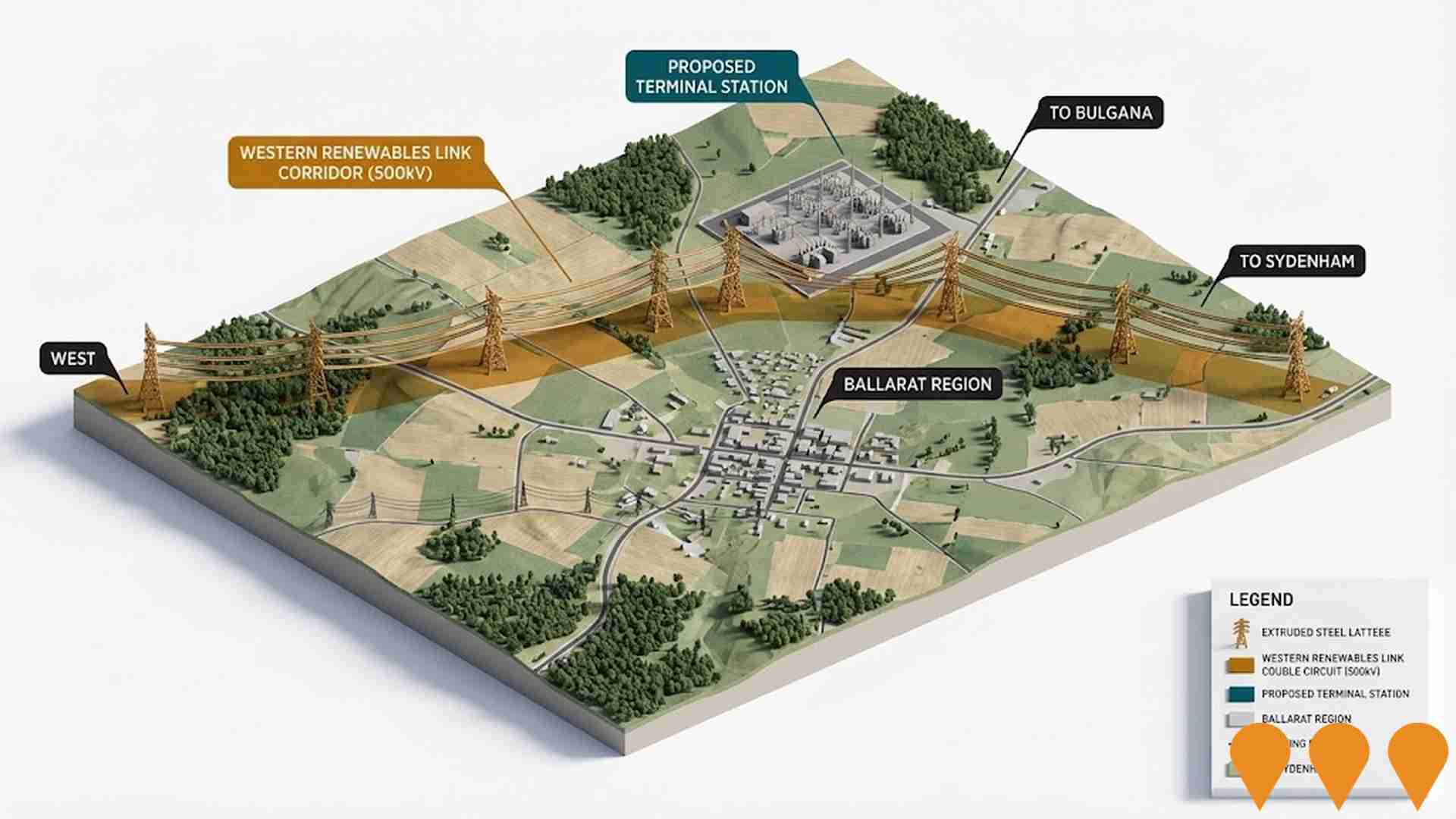
Central Goldfields Land Use Planning Framework
Strategic planning project to identify areas for growth in Central Goldfields Shire to meet future housing and industrial needs. Community consultation has identified preferences for preserving rural lifestyle while supporting controlled development with appropriate infrastructure. Planning includes Maryborough, Carisbrook, and surrounding townships.
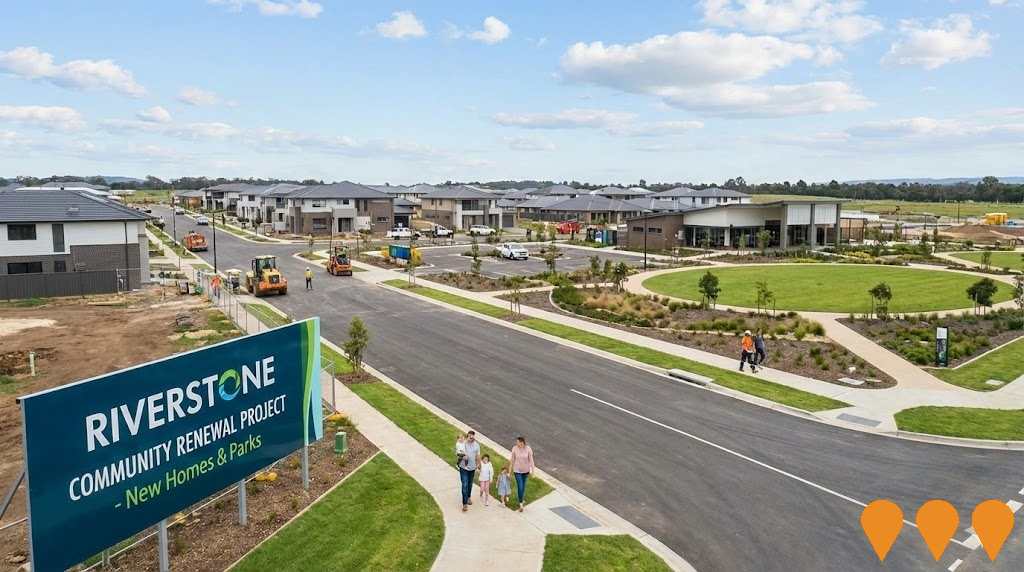
Western Highway Ballarat to Stawell Upgrade
Multi-billion dollar highway duplication project between Ballarat and Stawell, with 55km already completed between Ballarat and Buangor. The project includes adding two lanes in each direction with central median, upgrading intersections, and building new bridges. Benefits freight movement and regional connectivity including to Maryborough area.

Ararat to Maryborough Line Upgrades (Murray Basin Rail Project)
Reopening and subsequent upgrades of the 88 km Maryborough-Ararat freight line (Avoca line) as part of the Murray Basin Rail Project. Works delivered standard gauge, 21-tonne axle loading, new 47 kg rail and ballast, a new passing loop at Elmhurst (mid-2024), and associated junction/signalling upgrades. The line is operational; further signalling works around Maryborough continue under the broader program.

Employment
AreaSearch analysis reveals Daylesford significantly outperforming the majority of regions assessed nationwide
Daylesford has a highly educated workforce with diverse sector representation. Its unemployment rate is 2.2%, lower than the national average of 5.6%.
Over the past year, employment grew by an estimated 6.9%. As of June 2025, 5,080 residents are employed, with an unemployment rate of 1.5% below Rest of Vic.'s rate of 3.8%. Workforce participation is somewhat lower at 53.4%, compared to Rest of Vic.'s 57.4%. Dominant employment sectors include health care & social assistance, accommodation & food, and construction.
Notably, accommodation & food has a concentration index of 1.7 times the regional average. Retail trade is under-represented with only 7.5% of Daylesford's workforce compared to 9.9% in Rest of Vic.. Employment opportunities locally may be limited as indicated by Census data showing more residents working outside the area than living there. Between June 2024 and June 2025, employment levels increased by 6.9%, labour force grew by 6.8%, with unemployment remaining essentially unchanged. In contrast, Rest of Vic. saw employment contract by 0.9%, labour force fall by 0.4%, and unemployment rise by 0.4 percentage points. Jobs and Skills Australia's national employment forecasts from May 2025 project total employment growth of 6.6% over five years and 13.7% over ten years, with variations across sectors. Applying these projections to Daylesford's employment mix suggests local growth of approximately 6.4%% over five years and 13.3% over ten years.
Frequently Asked Questions - Employment
Income
Income figures position the area below 75% of locations analysed nationally by AreaSearch
Daylesford had a median taxpayer income of $43,968 and an average income of $64,708 according to postcode level ATO data aggregated by AreaSearch for the financial year 2022. This is comparable to national averages, unlike Rest of Vic.'s median income of $48,741 and average income of $60,693. Based on a Wage Price Index growth rate of 12.16% since financial year 2022, estimated incomes as of September 2025 would be approximately $49,315 (median) and $72,576 (average). Census data from 2021 shows household, family, and personal incomes in Daylesford ranked modestly, between the 23rd and 29th percentiles. The earnings profile indicates that the largest segment comprises 27.7% earning $1,500 - $2,999 weekly, with 2,995 residents falling into this category, aligning with regional levels where this cohort represents 30.3%. Housing costs are modest, with 87.0% of income retained. However, total disposable income ranks at just the 28th percentile nationally, and the area's SEIFA income ranking places it in the 6th decile.
Frequently Asked Questions - Income
Housing
Daylesford is characterized by a predominantly suburban housing profile, with above-average rates of outright home ownership
In Daylesford, as per the latest Census, 95.3% of dwellings were houses, with the remaining 4.7% being semi-detached, apartments, or other types. This compares to Non-Metro Vic.'s 96.1% houses and 3.9% other dwellings. Home ownership in Daylesford stood at 51.2%, with mortgaged dwellings at 33.6% and rented ones at 15.3%. The median monthly mortgage repayment was $1,600, higher than Non-Metro Vic.'s average of $1,538. Median weekly rent in Daylesford was $330, compared to Non-Metro Vic.'s $300. Nationally, Daylesford's median monthly mortgage repayment was lower at $1,600 than the Australian average of $1,863, and its median weekly rent was lower at $330 than the national figure of $375.
Frequently Asked Questions - Housing
Household Composition
Daylesford features high concentrations of lone person households, with a lower-than-average median household size
Family households constitute 64.0% of all households, including 19.6% couples with children, 35.9% couples without children, and 7.9% single parent families. Non-family households comprise the remaining 36.0%, with lone person households at 33.0% and group households at 3.1%. The median household size is 2.1 people, which is smaller than the Rest of Vic. average of 2.4.
Frequently Asked Questions - Households
Local Schools & Education
The educational profile of Daylesford exceeds national averages, with above-average qualification levels and academic performance metrics
Daylesford's educational attainment is notably higher than broader benchmarks. 34.6% of residents aged 15 years and above have university qualifications, compared to 21.7% in the rest of Victoria and 24.6% in the SA4 region. This educational advantage positions Daylesford favourably for knowledge-based opportunities. Bachelor degrees are most prevalent at 21.2%, followed by postgraduate qualifications (8.4%) and graduate diplomas (5.0%). Vocational credentials are also prominent, with 34.4% of residents aged 15 years and above holding such qualifications – advanced diplomas (13.5%) and certificates (20.9%).
A significant 24.9% of the population is actively pursuing formal education, including 8.5% in primary education, 7.9% in secondary education, and 3.4% in tertiary education. Daylesford has a robust network of 8 schools educating approximately 974 students, with typical Australian school conditions (ICSEA: 1039) and balanced educational opportunities. The area serves as an educational centre for the broader region, with school capacity exceeding residential needs (9.0 places per 100 residents vs 7.4 regionally). There are 7 primary schools and 1 secondary school serving distinct age groups in Daylesford.
Frequently Asked Questions - Education
Schools Detail
Nearby Services & Amenities
Transport
Transport servicing is very low compared to other areas nationally based on assessment of service frequency, route connectivity and accessibility
Transport analysis indicates 20 active public transport stops in Daylesford, offering a mix of bus services. These stops are served by 10 individual routes, collectively facilitating 223 weekly passenger trips. Transport accessibility is rated as limited, with residents typically situated 1408 meters from the nearest stop.
Service frequency averages 31 trips per day across all routes, equating to approximately 11 weekly trips per individual stop.
Frequently Asked Questions - Transport
Transport Stops Detail
Health
Health performance in Daylesford is well below average with prevalence of common health conditions notable across both younger and older age cohorts
Daylesford faces significant health challenges, with common conditions affecting both younger and older residents.
Private health cover is more prevalent here than average, at approximately 52% (~5612 people). The most frequent medical issues are arthritis (10.1%) and mental health problems (9.2%). A majority (62.3%) report no medical ailments, compared to 63.5% in the rest of Victoria. Daylesford has a higher proportion of seniors aged 65 and over at 29.4% (~3178 people), compared to 24.2% in the rest of Victoria. Despite this, health outcomes among seniors are strong, outperforming general population metrics.
Frequently Asked Questions - Health
Cultural Diversity
Daylesford ranks below the Australian average when compared to other local markets across a number of language and cultural background related metrics
Daylesford's cultural diversity was found to be below average, with 87.4% of its population being Australian citizens and 82.1% born in Australia. English was the language spoken exclusively at home by 93.3% of residents. Christianity was the predominant religion, practiced by 36.0% of Daylesford's population.
Notably, Judaism was overrepresented, comprising 0.2% compared to 0.1% across the rest of Victoria. In terms of ancestry, the top three groups were English (30.5%), Australian (23.1%), and Irish (12.7%). Some ethnic groups showed notable differences: Scottish was overrepresented at 10.7%, Dutch at 1.8%, and Hungarian at 0.4%.
Frequently Asked Questions - Diversity
Age
Daylesford ranks among the oldest 10% of areas nationwide
Daylesford's median age is 53, which is higher than Rest of Vic.'s figure of 43 and substantially exceeds the national norm of 38. Compared to Rest of Vic., Daylesford has a higher concentration of 55-64 residents at 18.9%, but fewer 25-34 year-olds at 6.9%. This 55-64 concentration is well above the national figure of 11.2%. Between the 2021 Census and the present, the 15 to 24 age group has grown from 6.6% to 8.2%, while the 75 to 84 cohort increased from 7.8% to 9.2%. Conversely, the 5 to 14 cohort has declined from 9.5% to 8.3%. Looking ahead to 2041, demographic projections indicate significant shifts in Daylesford's age structure. The 25 to 34 group is expected to grow by 37%, reaching 1,024 people from the current 747. Meanwhile, the 65 to 74 and 5 to 14 cohorts are projected to experience population declines.

